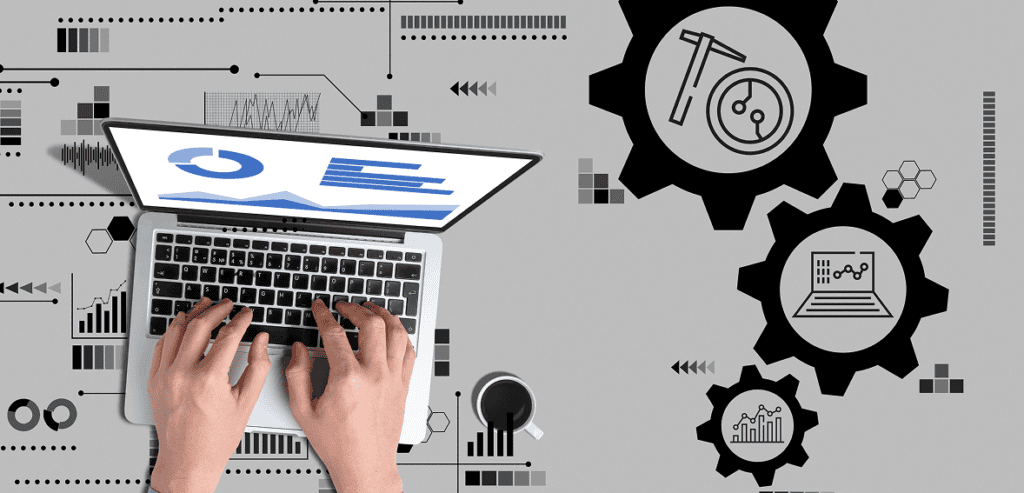
By Bethany Johnson July 8, 2025
B2B transactions have unique payment challenges, especially when it comes to credit card processing. While consumer-facing businesses often deal with small-ticket transactions and frequent swipes, B2B merchants typically handle large invoices, purchase orders, and commercial cards. This difference in scale and complexity makes interchange fees a much more significant cost factor in B2B environments.
Many B2B merchants unknowingly overpay for credit card transactions simply because they aren’t using the right setup. In particular, they miss out on interchange optimization B2B benefits that are available by using Level 2 and Level 3 data. This optimization allows for lower interchange rates when specific transaction data is included, directly translating into cost savings.
Whether you’re new to payment processing or already accept commercial cards, understanding Level 3 processing savings can make a real impact on your bottom line.
What Are Level 2/3 Payments?
B2B and commercial credit card transactions are treated differently from standard consumer card transactions. They often carry higher interchange fees due to larger amounts, higher risk, and more complex invoice structures. However, card networks like Visa and Mastercard offer a solution in the form of Level 2 and Level 3 payment processing.
These levels refer to the amount of data provided with each transaction. Level 2 data credit card processing includes fields like tax amount, invoice number, and customer code. Level 3 processing goes even further, requiring line-item detail such as product descriptions, quantities, unit prices, and shipping amounts. The more data you provide, the more secure and verifiable the transaction becomes in the eyes of the card networks.
Card issuers reward this added transparency by lowering interchange rates. It’s essentially a risk-based pricing model: more data means less fraud risk, which leads to better rates. This is the core of interchange optimization B2B, allowing merchants to reduce their cost per transaction just by providing extra details.
It’s important to note that Level 2 and Level 3 processing is generally available only on commercial or purchasing cards, not personal credit cards. This makes it especially relevant for businesses that deal primarily with corporate clients, government buyers, or institutional customers.
Fee Savings Potential

The biggest motivator for merchants to implement Level 2 and 3 data is the potential to significantly lower B2B credit card fees. The difference between standard and optimized interchange rates can be substantial, especially when multiplied across high-volume or high-value sales.
Let’s look at a simple example. Suppose a business processes a $5,000 transaction using a corporate Visa card. If processed at the standard interchange rate of 2.70%, the fee would be $135. However, by qualifying for Level 3 processing savings, the merchant could bring the rate down to approximately 1.90%, cutting the fee to just $95. That’s a $40 savings on a single transaction.
Over time, these savings compound. A company processing $500,000 a month in B2B card payments could save $4,000 monthly just by sending the right data. Annually, that amounts to nearly $50,000 in savings — without changing the volume of sales or increasing prices.
This is the heart of interchange optimization B2B. By simply adopting smarter processing practices, merchants can dramatically reduce their cost of doing business. These savings can then be reinvested into operations, used to offer more competitive pricing, or added to profit margins.
Even businesses with smaller average ticket sizes can benefit. The more transactions you process, the more valuable each small percentage of savings becomes. In competitive industries where margins are tight, every dollar counts.
How to Implement Level 2/3 Processing
Knowing that Level 2 and Level 3 data can help reduce fees is one thing. Actually implementing it is another. Thankfully, setting up Level 2 data credit card or Level 3 processing isn’t as complicated as it may sound, especially with the right tools and support.
The first requirement is a payment gateway or virtual terminal that supports Level 2/3 data. Not all credit card processors or point-of-sale systems allow merchants to submit the extra fields needed for these optimized rates. Platforms like Authorize.Net, NMI, and certain enterprise-level solutions have built-in support for Level 2 and Level 3 transactions.
Next, the merchant needs to ensure they are collecting the right data during checkout or invoice processing. For Level 2, this typically includes tax amount, customer code, and invoice number. For Level 3, merchants must provide more detailed information such as line-item details, quantities, unit cost, and product codes.
It’s also important to understand eligibility requirements. Some industries, like retail or hospitality, may not qualify for Level 3 rates because they primarily deal with personal cards. Likewise, if you process mostly consumer transactions, this optimization may not apply to your business. That’s why it’s important to consult with your payment provider to see if your merchant category code (MCC) and customer base align with Level 3 eligibility.
Working with a B2B-focused payments partner can streamline the entire setup. Many modern gateways automate data population, so merchants don’t have to manually enter every detail. This not only saves time but also reduces human error, ensuring transactions qualify for the best possible rates consistently.
If your processor does not support Level 2 or 3 data, it may be worth switching to one that does. The long-term savings typically outweigh any upfront cost or integration effort. Your provider should also help test and certify that your transactions are properly qualifying for the lower interchange tiers.
Technical Setup and Data Requirements

Getting started with interchange optimization B2B requires some technical preparation, but the long-term benefits justify the setup. A key element is ensuring your payment platform is capable of transmitting enhanced data securely and in the right format.
Most B2B merchants achieve this through either a virtual terminal or an API integration with their accounting or ERP system. The virtual terminal is ideal for manual entries, such as when processing one-off invoices. ERP or accounting software integrations are better suited for automating batch uploads and reducing manual intervention.
For Level 2 transactions, required data fields include:
- Merchant name
- Transaction amount
- Tax amount
- Invoice number
- Customer code
For Level 3 transactions, the list expands to include:
- Product code
- Item description
- Quantity and unit cost
- Freight and shipping cost
- Destination ZIP code
- Duty amount, if applicable
The accuracy of this data matters. Missing or incorrect fields can disqualify a transaction from optimized interchange rates, leading to higher fees. That’s why many B2B payment platforms offer pre-built templates or validation checks to ensure compliance before submission.
Also, ensure your team is trained to input or verify the correct data at the point of entry. Even with automation, human oversight remains important. If your staff isn’t entering tax amounts or customer IDs consistently, you might miss out on potential Level 3 processing savings.
Choosing the Right Payment Processor
Your payment processor plays a vital role in how effectively you can pursue interchange optimization B2B. Not all providers are equipped to support Level 2 and Level 3 processing, and those that do may offer different levels of automation, reporting, and support.
Look for a processor that specializes in B2B or enterprise-level services. These providers are more likely to have deep knowledge of corporate card acceptance, industry-specific challenges, and interchange optimization. Ask them directly if they support Level 2 and Level 3 data and whether they offer tools to streamline data entry.
It’s also important to evaluate how transparent your processor is with reporting. They should be able to show which of your transactions qualified for optimized rates, which ones didn’t, and why. This allows you to continuously improve your processes and maximize savings.
Finally, make sure they offer a scalable solution. As your business grows, your processing needs may evolve, and your provider should be able to support your increasing volume and complexity without forcing a costly migration.
Compliance and Security Considerations

While the focus of Level 2 data credit card and Level 3 processing is on saving money, it’s also important to stay compliant. Enhanced data transmission involves handling more sensitive customer and transactional information, which must be protected under PCI-DSS (Payment Card Industry Data Security Standard).
If you’re sending item-level details or customer codes, you need to ensure that your payment platform is fully PCI-compliant. This includes encrypting data, controlling access permissions, and monitoring for breaches. Your payment gateway should handle most of this in the background, but it’s still your responsibility as a merchant to work with secure systems and vendors.
In some cases, government or institutional buyers may have additional requirements around data handling. Always check if there are any special compliance guidelines for your industry, especially if you serve regulated sectors like healthcare, education, or public administration.
Despite these considerations, the risks are manageable and the tools available today make compliance easier than ever. Just make sure your payment solution and internal processes are up to the task.
Real-World Impact on B2B Operations
The benefits of Level 3 processing savings go beyond just financial efficiency. They can also improve cash flow, enhance reporting, and make you a more attractive vendor to your clients. Many corporate buyers prefer suppliers who can handle Level 3 data, as it aligns with their own accounting and compliance workflows.
Faster transaction approvals, cleaner invoice reconciliation, and improved documentation are all byproducts of adopting enhanced data processing. These advantages not only help your accounting department but also strengthen your overall business relationship with large customers.
Moreover, savings from lower B2B credit card fees can be reinvested into better service, improved pricing strategies, or customer loyalty initiatives. In a competitive B2B landscape, these extra margins can make a meaningful difference.
Common Mistakes to Avoid
Even with the right tools, some merchants fail to fully realize the benefits of interchange optimization B2B due to avoidable mistakes. These include not populating all required fields, relying on outdated payment software, or using a processor that does not offer clear reporting.
Another common oversight is treating Level 2 and Level 3 optimization as a one-time setup. In reality, it requires ongoing attention. You should regularly audit your transactions to ensure they’re qualifying correctly and update your data inputs or workflows when needed.
It’s also easy to assume that all corporate card transactions will qualify for Level 3 automatically. But unless the correct data is submitted, the transaction defaults to a higher-rate category. Keeping your staff informed and your software updated is key to maintaining savings.
Conclusion
For B2B merchants, every fraction of a percentage point saved in credit card processing fees adds up. Level 2 and Level 3 data processing offers a powerful opportunity to optimize interchange costs without sacrificing customer experience or operational efficiency. With the right tools, support, and awareness, merchants can reduce costs, improve reporting, and gain a competitive edge.
By understanding interchange optimization B2B, leveraging the right gateway, and committing to accurate data submission, businesses can unlock meaningful Level 3 processing savings. The key is to start now, audit your current setup, and explore whether your payment system is truly optimized for B2B success.
FAQs
What is the difference between Level 2 and Level 3 credit card data?
Level 2 data includes basic transaction information such as tax amount, invoice number, and customer code. Level 3 data adds more line-item details like product descriptions, quantities, and shipping information. More data results in lower interchange rates for eligible B2B transactions.
How can I qualify for Level 3 processing rates?
To qualify, you must accept commercial or purchasing cards and use a payment gateway that supports Level 3 data. You’ll also need to enter specific data fields per transaction. Some industries or merchant categories may not be eligible, so check with your provider.
Does Level 3 processing work with all credit cards?
No, Level 3 processing is typically available only for commercial, government, and purchasing cards. Personal credit cards do not qualify for these enhanced data rates.
Is Level 3 processing worth it for small businesses?
Yes, especially if your business deals with other companies and processes large invoices. Even small savings per transaction can add up over time, making it a smart move for businesses of all sizes.